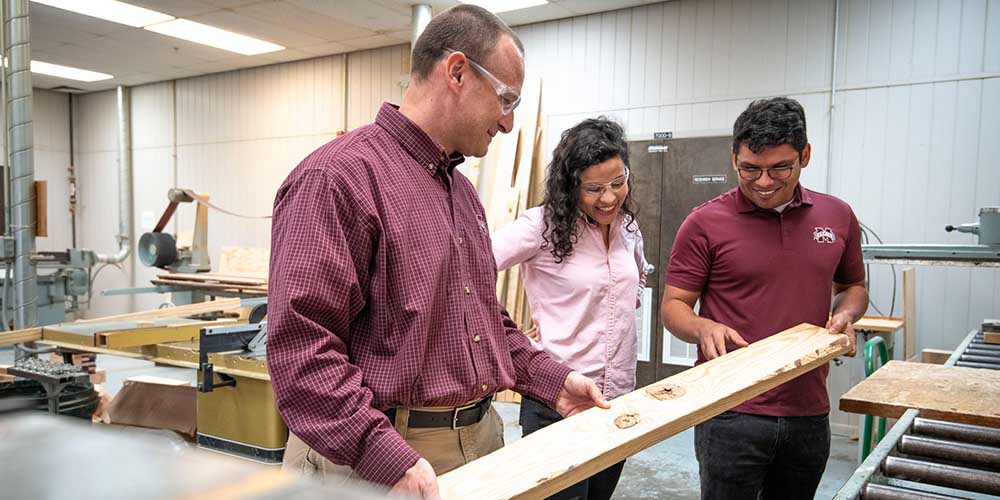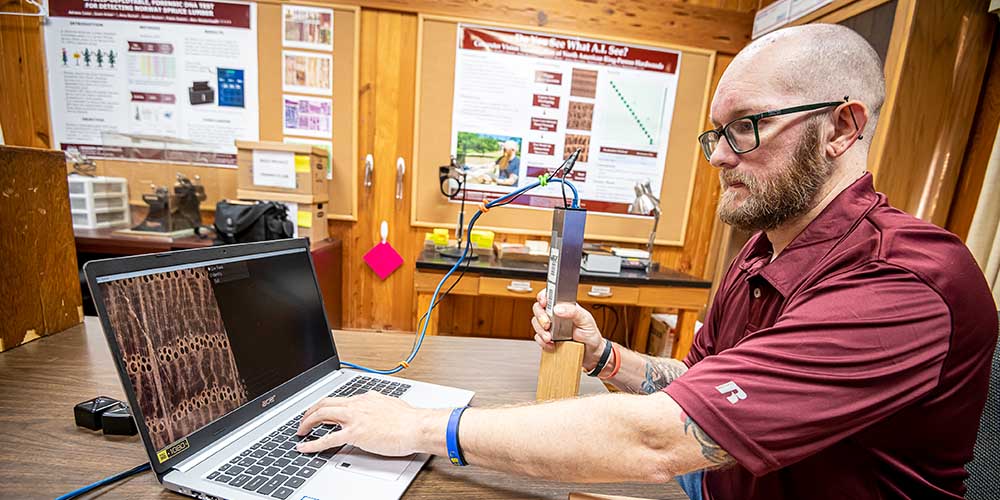Artificial Intelligence and Forensic Wood Identification Stories

MSU researchers use AI to better evaluate lumber
Researchers in the Forest and Wildlife Research Center hope to leverage artificial intelligence to improve grading technology for soft and hardwoods. The machine learning method will augment existing grading technology. The team will develop an image-based machine learning model that will be able to tease out nuanced differences in lumber characteristics, such as knots and decay. In certain circumstances, these characteristics can be a challenge for current automated and human grading technologies and techniques. Since the value of each piece of lumber value is closely related to the nature and extent of these characteristics, researchers hope the tool will help the forest products industry increase profitability.
2022

Using AI to Identify Wood
Traditionally, wood identification has been the work of wood anatomists, specialists who examine wood with a magnifying glass looking for combinations of patterns in the wood's structure that are unique to the species or genus. FWRC scientist Dr. Frank Owens, assistant professor in the Department of Sustainable Bioproducts, is finding promise in artificial intelligence to identify wood. The XyloTron was invented by Dr. Alex Wiedenhoeft, a colleague at the USDA Forest Products Laboratory's Center for Wood Anatomy Research in Madison, Wisconsin. The system operates with a XyloScope, an instrument that works like a high-resolution camera, and computer software to analyze the picture and identify the species or genus. The operator prepares the end grain of a wood sample to reveal tiny anatomical features, takes a magnified picture of the cross-section, and pushes a button to start the classification process, which takes only a few seconds.
The tool is promising but not yet ready to replace human expertise, often making mistakes that a human would not. Breakthrough technology such as AI computer vision is complex and will not be perfected overnight. But it takes scientists like those from FWRC to set the foundation for further research that will radically transform the global fight against illegal logging in the future. This research was funded by the Forest and Wildlife Research Center with partial funding from USDA ARS, the United States Department of State, the USDA Forest Service, the Forest Stewardship Council, and a Wisconsin Idea Baldwin Grant.